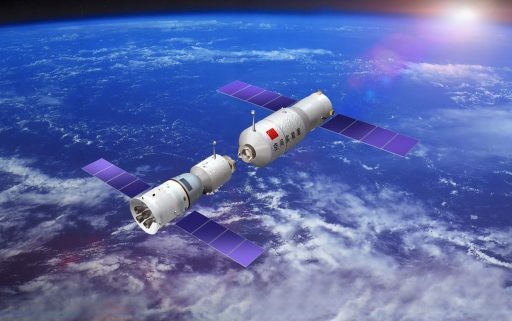China's Tianzhou-1 cargo and resupply spacecraft will be launched by a new Long March 7 rocket in April to dock with the orbiting Tiangong-2 space lab 390 kilometers above the Earth.
The 13-tonne, 9m long, 3.35m diameter Tianzhou-1, which is equipped with a 6,500-kg cargo capacity, is designed for refueling and resupplying the future Chinese Space Station (CSS), which will be launched in 2018.
It will test the on-orbit transfer of liquid propellant to Tiangong-2 during the mission. The spacecraft can also be used to remove waste from the CSS, which will then burn up in the atmosphere along with the deorbited Tianzhou vessel.
Thus, the launch is a test of key technologies needed for the CSS in establishing a permanent human presence in space.The CSS will be equipped with three 20-tonne modules that could host up to six astronauts, with groups of three staying for around six months each. The completion of the CSS is scheduled in 2022.
Tiangong-2 hosted two astronauts for China's longest human spaceflight mission late last year.
Tianzhou-1 and its Long March 7 carrier rocket will be shipped from Tianjin to the Wenchang Space Launch Centre on the southern island province of Hainan in February.
Rendezvous and docking with Tiangong-2 will occur three to five days after launch, much slower than the two days taken crewed Shenzhou spacecraft take to dock with space labs.
Li Jian of the Beijing Aerospace Control Centre noted that since this approach requires less fuel consumption, more fuel can be transferred to the target.The various compartments of Tianzhou can be used to store food, space equipment and other supplies, along with the propellant required to maintain its orbit.
Other science experiments that could be undertaken at Tianzhou-1 in addition to those already running on Tiangong-2 include a cell bioreactor to test the influence of microgravity on mammalian cells.




























